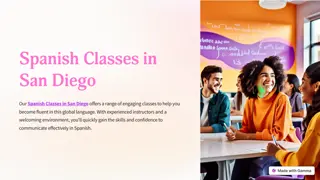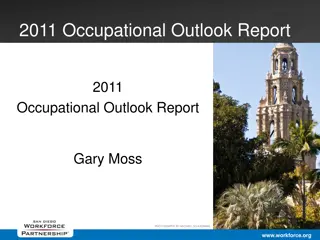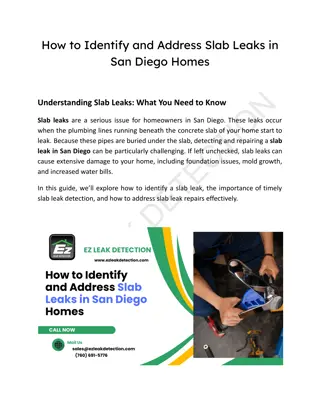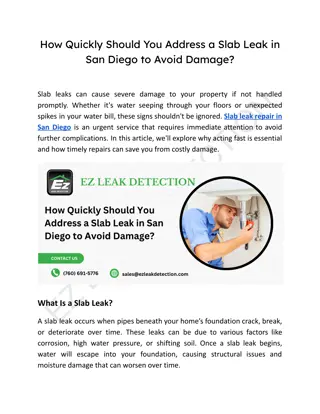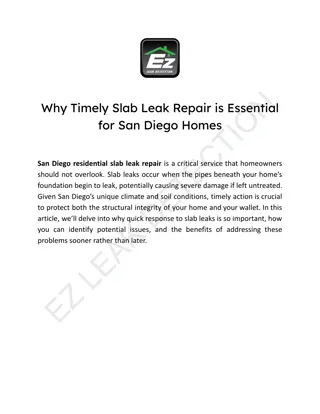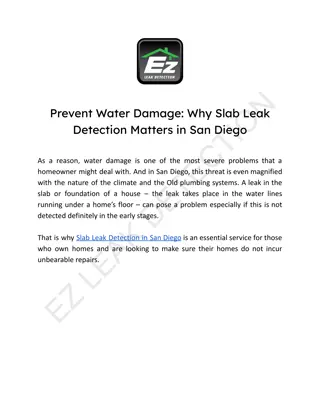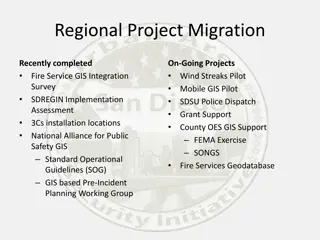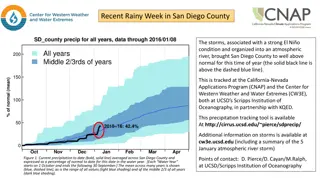San Diego YHDP Higher Education Convening - Oct 22, 2019
San Diego County received $7.94 million from HUD for youth homelessness prevention. YHDP aims to unite stakeholders for rare, brief, non-recurring youth homelessness. The CCP focuses on housing, education, employment, and well-being within the community. The mission is to connect youth to necessary services to combat homelessness effectively.
Download Presentation

Please find below an Image/Link to download the presentation.
The content on the website is provided AS IS for your information and personal use only. It may not be sold, licensed, or shared on other websites without obtaining consent from the author.If you encounter any issues during the download, it is possible that the publisher has removed the file from their server.
You are allowed to download the files provided on this website for personal or commercial use, subject to the condition that they are used lawfully. All files are the property of their respective owners.
The content on the website is provided AS IS for your information and personal use only. It may not be sold, licensed, or shared on other websites without obtaining consent from the author.
E N D
Presentation Transcript
SAN DIEGO YHDP HIGHER EDUCATION CONVENING OCT 22, 2019
Welcome (back)! Susie Terry, San Diego County Office of Education (SDCOE) susanne.terry@sdcoe.net Christina Dukes, National Center for Homeless Education (NCHE) cdukes@serve.org
Shout out UCSD! Thank you! Thank you! https://basicneeds.ucsd.edu/
Where Were Headed Today Introductions Context, catch-up, and moving forward (your survey responses) Topic deep-dive: Identification YHDP project meet and greet AB74 college rapid rehousing Student scenarios Sip, snack, and shoot the (professional) breeze
Nice to (re)meet you! Please tell us about yourself! Please tell us about yourself! Name Agency/Organization Brief summary of your work And a special welcome to students joining us!
CONTEXT, CATCH-UP, AND MOVING FORWARD
YHDP as a Catalyst In July 2018, San Diego County received $7.94 million from the U.S. Department of Housing and Urban Development (HUD) to develop and implement a Coordinated Community Plan (CCP) to prevent and end youth and young adult homelessness YHDP is based on USICH s youth framework core outcomes: Housing, Education and Employment, Permanent Connections, Well-being CCP approved in Mar 2019 YHDP-funded project competition and awarding (Summer 2019)
YHDP as a Catalyst San Diego s YHDP Mission: To unite providers, young people, and diverse stakeholders together to ensure that youth homelessness is rare, brief and non-recurring by utilizing a coordinated youth ecosystem to connect youth to housing services and community resources. San Diego s CCP includes an intentional focus on the 3 E s (education, employment, entrepreneurship)
housing education employment and income
Discussion Summary: January 2019 Identifying YYA experiencing homelessness in higher education Existing supports and services for YYA experiencing homelessness in higher education Support and service gaps for YYA experiencing homelessness in higher education Areas for future action Our guiding question: Our guiding question: How can we partner together in San Diego County to support (higher) educational access and success for young people experiencing homelessness?
Discussion Summary: May 2019 Identifying YYA experiencing homelessness in higher education Supporting the K12 to higher education transition Securing housing for YYA experiencing homelessness Building out campus-based supports for YYA experiencing homelessness Continuing and extending the conversation
Survey Results Frequency of Meetings Quarterly January, April, July, September Hosting & Agenda Reaching out
Survey Results Student Voice Yes = 11; No = 6 Yes = 11; No = 6 Ways in which you are incorporating Ways in which you are incorporating students: students: Committees One on One Advisory Groups San Diego YAB Youth Advocacy Panels Outreach
Identification Legal Perspectives Higher Ed & High Schools working together Policy updates Areas of joint focus Housing models & support point of contact Safe parking models College focused rapid rehousing Student needs initiatives Survey Results Future Topics Resources AB 302, AB 74, SD 568
Additional Opportunities to Engage Interested in joining the San Diego Youth Homelessness Consortium? Contact Susie Terry, SDCOE, at susanne.terry@sdcoe Have young people with lived experience of homelessness who s like to join the San Diego Youth Action Board (YAB)? Contact YAB at sdyab@googlegroups.com
Q&A and Discussion
IDENTIFYING YOUNG PEOPLE EXPERIENCING HOMELESSNESS
Identification Strategies Warm hand-offs (between K12, service providers, campus offices, others?) Outreach based on FAFSA unaccompanied homeless youth responses Question on college applications (e.g. CCCApply and Cal State Apply standard applications) Example from My SDCCD Info: Special Categories: The application will also ask if you are, or have ever been, homeless (within the last 24 months) or in court-ordered foster care. If either of these apply to you, please be sure to check yes. The colleges offer specific services to help you succeed in college and it will allow us to provide you with important information including access to additional financial resources, and on- campus resources.
Identification Strategies Posters, flyers, and other public awareness materials and initiatives (student self-identification, homeless awareness week) Training to build staff awareness and referrals Identification through campus supports (basic needs info at food pantry, nutrition boost box with basic needs flyer, SNAP and FAFSA assistance initiatives, etc.) Professor syllabi Student referrals via a care line Other strategies you re using or that we should consider?
Discussion Are you using these identification strategies? How are they working? Which campus or other staff might you train to recognize signs of homelessness and refer to supports? Let s check out some sample posters
Action Step! What is one next step you will take one next step you will take to improve the identification of young people experiencing homelessness within your campus or organization?
Meet Your YHDP-Funded Project Partners Mayra Valdez, Regional Task Force on the Homeless (RTFH) mayra.valdez@rtfhsd.org
Eligibility Reminder YHDP-funded projects may only serve young people who meet categories 1, 2, or 4 of the HUD definition of homeless Category 1: Unsheltered (car, park, public space, etc.) or in a shelter Category 2: At imminent risk of losing housing (within 14 days) with no subsequent fixed, regular, adequate housing secured, or staying in a hotel or motel paid for by a government or charitable source Category 4: Fleeing danger/violence/abuse HUD resource: Eligible Populations under the Youth Homelessness Demonstration Project And yet, consider the possibilities of blending funding from sources with broader eligibility criteria (e.g. AB74)
Youth System Navigators: $1,300,000 Youth dedicated housing system navigators who will support identification of youth, navigation of coordinated entry and access to existing housing, connection to non-housing resources and mainstream benefits, and connection to other supports such as education and employment. Agency Home Start, Inc. San Diego County Office of Education San Diego Youth Services (SDYS) South Bay Community Services (SBCS) The San Diego LGBT Community Center (The Center) YMCA of SD County Service Area East & Central County-wide County-wide South Central & South North 2 Year Award $ 216,667 $ 216,667 $ 216,667 $ 216,667 $ 216,667 $ 216,667 Prevention and Diversion: $1,260,000 This program is aimed at connecting youth to safe, stable, and inclusive housing; permanent connections; employment, education and entrepreneurialism; and promoting social and emotional well-being. Agency North County Lifeline San Diego Youth Services (SDYS) The San Diego LGBT Community Center (The Center) Service Area North County-Wide 2 Year Award $ 209,523 $ 402,701 Central & South County-wide $ 284,835 $ 362,941 YMCA of SD County
Crisis Response Host Home: $335,165 Host homes may serve either youth under age 18 who need a cooling off period with their family of origin in order to safely remain at home; or may serve youth who enrolled in post-secondary education and need somewhere to stay during school breaks. Agency Home Start, Inc. The San Diego LGBT Community Center (The Center) Service Area East & Central Central 2 Year Award $ 207,468 $ 127,697 Flexible Non-Time Limited Housing: $4,410,210 A program aimed at connecting youth to safe, permanent, and inclusive housing; permanent connections; employment, education and entrepreneurialism; and promoting social and emotional well-being. Agency Home Start, Inc. - Joint TH/RRH Program San Diego Youth Services (SDYS) - Wellbeing - Joint TH/RRH Program South Bay Community Services (SBCS) - Joint TH/RRH Program Urban Street Angels, Inc. - Joint TH/RRH Program YMCA of SD County - Joint TH/RRH Program YMCA RRH Stand Alone Service Area East East, Central & North 2 Year Award $ 313,750 $ 2,121,020 South Central North County-wide $ 507,278 $ 750,000 $ 401,847 $ 316,315
Enhanced Data System: $472,632 Expanded HMIS and CES system to include new YHDP programs. Agency RTFH - HMIS RTFH - CES YHDP Planning: $161,090 San Diego will use YHDP planning funds to support the implementation and coordination of YHDP including supporting the San Diego Youth Action Board, implementation coordination, tracking initiative s progress, and general planning coordination 2 Year Award $ 307,632 $ 165,000
Discussion: Referrals and Connections For YHDP-funded projects: What is your vision for connecting the young people you serve to education? For the group: How should YHDP projects and institutions of higher education connect young people they re serving across systems? Coordinated entry? Some other way?
Q&A and Discussion
CA AB74: COLLEGE RAPID REHOUSING
Shout out to JBAY! Many thanks to JBAY for their vision, advocacy, and ongoing support! https://www.jbaforyouth.org/
AB74 Basics $19 million allocated to college rapid rehousing in the CA 2019-2020 State Budget bill (AB 74); signed Summer 2019 Purpose: To assist homeless and housing insecure college students through housing and wrap-around services provided through higher education/community partnerships JBAY AB74 Fact Sheet
AB74 Purpose and Vision Address the permanent housing needs of students experiencing homelessness Create long-term solutions that end homelessness for students and support college retention and success Develop evidence for the efficacy of college focused rapid rehousing as a pathway to expanded funding
Model Program: Jovenes, Inc (Los Angeles) The College Success Initiative Housing (bridge housing, short-term host homes, RRH) + peer navigator support + connection to LA coordinated entry system Outcomes: Over 80% of our students have persisted in school, and we ve already celebrated numerous graduations and transfers Eric Hubbard, Director of Development & Strategic Partnerships EHubbard@jovenesinc.org https://www.jovenesinc.org/college-housing/
RRH 101 Funds shall be available to support rapid rehousing efforts homeless and housing insecure students rapid rehousing efforts assisting RRH is an approach that quickly moves households experiencing homelessness into long-term permanent housing, typically in the private market. Typical components of RRH support: housing search and move-in support time-limited, flexible rental subsidies case management to support housing stability
Mandatory Use of AB74 Funds Campuses shall establish ongoing partnerships with community organizations shall establish ongoing partnerships with community organizations that have a tradition of helping populations experiencing homelessness to provide wraparound services and rental subsidies for students. Mandate to partner with experienced housing providers with expertise in finding housing managing tenant/landlord relationships administering ongoing rental subsidies for students requiring more intensive intervention Ongoing rental subsidies provided directly by a housing provider may not reduce a student s eligibility for financial aid
Optional Uses of AB74 Funds Funds may be used for (but authorized uses are not limited to): Connecting students with community case managers who have knowledge and expertise in accessing safety net resources Establishing ongoing emergency housing procedures, including on-campus and off-campus resources Providing emergency grants that are necessary to secure housing or to prevent the imminent loss of housing
Who is Homeless under AB74? AB74 uses the education definition of homelessness (Subtitle VII-B of the McKinney-Vento Homeless Assistance Act) Lacking a fixed, regular, and adequate nighttime residence , including Sharing the housing of other persons due to loss of housing, economic hardship of a similar reason ( doubled-up , couch-surfing ) Living in motels, hotels, trailer parks, or camping grounds due to the lack of alternative adequate accommodations Living in emergency or transitional shelters Abandoned in hospitals Living in a primary nighttime residence that is a public or private place not designed for or ordinarily used as a regular sleeping accommodation for human beings Living in cars, parks, public spaces, abandoned buildings, substandard housing, bus or train stations, or similar settings
UC, CSU, and CCC Approaches to AB74 Funding shall be allocated to campuses based on demonstrated need. Funding levels UC: $3.5 million CSU: $6.5 million CCC: $9 million Distribution timelines and methods UC: Already distributed to all 9 UC campuses, including UCSD CSU: Open RFP process, applications due Oct 25; CSU anticipates awarding funds to 5-7 CSU campuses in November CCC: Still deciding distribution method, hopes to finalize with in the next few week
AB74 Reporting Requirements By July 2020 and annually thereafter , institutions must report on the use of AB74 funds, including number of coordinators hired number of students served by campus distribution of funds by campus a description of the types of programs funded other relevant outcomes, such as the number of students that were able to secure permanent housing, and whether students receiving support remained enrolled at the institution or graduated
Questions for Consideration How will your campus identify a housing provider partner? What responsibilities will the housing provider take on and how will the fiscal relationship be defined? How will referrals between partners take place and how will ongoing communication be maintained? What additional optional uses will funding be used for? What protocols will be used to identify students, verify eligibility, and prioritize students for supports? How will you track data needed for reporting?
Q&A and Discussion
Scenario: Long-term Housing for SDSU Students We have struggled finding long-term housing for students. We talk to the student to problem-solve their situation to see if their finances or house-hunting strategy could be improved. For short-term housing, we can provide students two weeks of emergency housing in the dorms. If they have long-term housing needs, we refer them to a shelter or transitional housing program in the community. What partnerships have other agencies formed to increase temporary housing options and how are they locating long-term housing placements?
Scenario: Student Struggling with Substance Abuse We have been working with a former foster youth who has aged out of the extended foster care program and is now homeless and has enrolled at a local community college. The student excels in school; however, she s been on and off drugs. Her current drug of choice is meth. The student minimizes her substance abuse, since she s still maintaining passing grades. But, upon reviewing grades, we re seeing that her GPA has dropped from a 3.5 to a 2.5. How can we assist this youth in addressing her substance use issues while supporting her in her academics and housing?
Scenario: FAFSA Challenges We work with youth in transitional housing who are unable to meet the FASFA eligibility GPA and ratio of passed/dropped classes. These youth were earning their income through their community college s work study program, which requires that they qualify for federal aid through the FASFA. As a result, these youth simultaneously lose their financial aid as well as their source of income. Youth have reported challenges with the FASFA appeal process and lack of support/sensitivity from financial aid office. This process can be lengthy, and youth are unable to pay for books in a timely manner, causing them to fall behind in their classwork. Often when experiencing FAFSA barriers, youth consider dropping out of school and focusing on securing full-time employment. For many youth, the difficulty of meeting FASFA eligibility is related to absences/gaps in learning from kindergarten to present day resulting from homelessness, family stressors, etc., as well as the need to drop classes resulting from wanting to focus on securing income for housing.
SIP, SNACK, AND SHOOT THE BREEZE
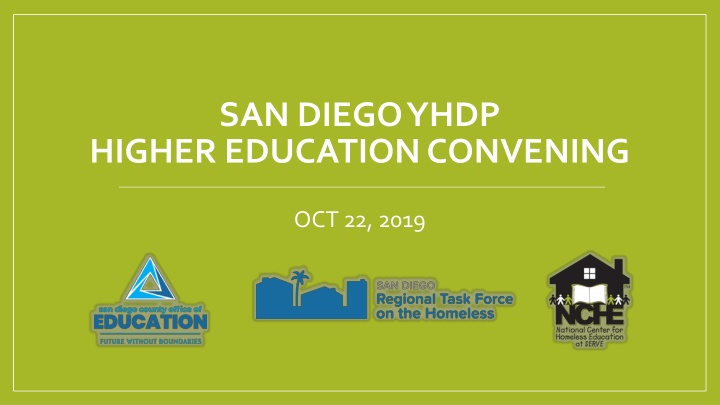

![(❤Read⚡) [✔PDF✔] The Best Travel Guide - San Diego: A Cicerone’s View of To](/thumb/68088/read-pdf-the-best-travel-guide-san-diego-a-cicerone-s-view-of-to.jpg)

